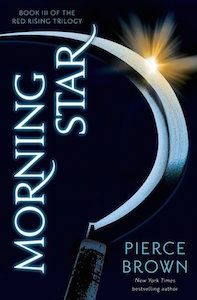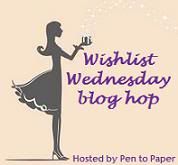This is going to be one the most difficult and surprising blog posts I've written lately, I think. All the way through my University studies, and even before, I was convinced that I was not a fan of Jane Austen. I had tried reading Pride and Prejudice before I began my university course, and decided (pretty quickly, I must admit) that it wasn't for me. Then, during my second year of study, both Pride and Prejudice and Persuasion were on the reading list for one of our literature modules. I was not happy, to say the least, but I was devoted to my course, and choosing the smallest Austen first (Persuasion), I set out hoping to take it on with an open mind. Whether or not I didn't enjoy it because I was reading for study, rather than for pleasure, or whether it was because my tastes hadn't changed enough yet, who knows - all I know is that I really didn't like it, and it took me so long to read Persuasion that I never did get around to introducing myself to Mr Darcy!
'So why did you decide to read it now,' I hear you ask me. Well... it has been ten months since I handed in my final piece of University work (strange as that seems! How can it be so long ago already?!), and my graduation ceremony was quickly approaching (I have since been to my graduation, and loved every second - though it made me miss being there so much more than I already did). I decided that it was long overdue that I read a classic again, but this time for the simple pleasure of the act, rather than for an essay.
I picked up my Kindle and turned to the 'Classics' collection that I have created on there, intent that, unless I'd already read it, I would start reading the first one in the list. You can guess, of course, that it was Pride and Prejudice. I was not going to give up on my original intentions though, so I opened the eBook, and started (with no small amount of scepticism) to read.
Well, wasn't I surprised to find that not only did I no longer seem to dislike Jane Austen's writing, I seemed to find it both easy-going and enjoyable! Surely this couldn't be the same writing I remembered disliking so much at University? I checked for other Kindle editions of the book, and on finding there to be not too many (weirdly), and none that I could find that were published by the likes of Penguin or Oxford Worlds Classics, I headed out to Waterstones to compare my eBook to a printed edition. I was shocked to find them exactly the same! And even more surprising was that a certain edition of Pride and Prejudice had particularly caught my eye. It was a US hardcover, published by Penguin, under the Penguin Drop Caps series - a rather beautiful series of classics and modern classics. I carried that beautiful volume around the shop with me for a while until I finally decided that I would take the full plunge and buy it. How happy am I that I did?!
Pride and Prejudice
Series: None
Pages: 403
Publisher: Penguin (US)
Release date: 12th December 2012
Buy: Book Depository | Amazon UK | Amazon US | Waterstones
Add to Goodreads
Pages: 403
Publisher: Penguin (US)
Release date: 12th December 2012
Buy: Book Depository | Amazon UK | Amazon US | Waterstones
Add to Goodreads
Goodreads synopsis:
From A to Z, the Penguin Drop Caps series collects 26 unique hardcovers—featuring cover art by type superstar Jessica Hische .
It all begins with a letter. Fall in love with Penguin Drop Caps, a new series of twenty-six collectible and gift-worthy hardcover editions, each with a type cover showcasing a gorgeously illustrated letter of the alphabet by superstar type designer Jessica Hische, whose work has appeared everywhere from Tiffany & Co. to Wes Anderson's film Moonrise Kingdom to Penguin's own bestsellers Committed and Rules of Civility. A collaboration between Jessica Hische and Penguin Art Director Paul Buckley, the series design encompasses foil-stamped paper-over-board cases in a rainbow-hued spectrum across all twenty-six book spines and a decorative stain on all three paper edges. Penguin Drop Caps debuts with an “A” for Jane Austen’s Pride and Prejudice, a “B” for Charlotte Brontë’s Jane Eyre, and a “C” for Willa Cather’s My Ántonia, and continues with more classics from Penguin.
A is for Austen. Few have failed to be charmed by the witty and independent spirit of Elizabeth Bennet in Austen’s beloved classic Pride and Prejudice. Elizabeth’s early determination to dislike Mr. Darcy is a prejudice only matched by the folly of his arrogant pride. Their first impressions give way to true feelings in a comedy profoundly concerned with happiness and how it might be achieved.
It all begins with a letter. Fall in love with Penguin Drop Caps, a new series of twenty-six collectible and gift-worthy hardcover editions, each with a type cover showcasing a gorgeously illustrated letter of the alphabet by superstar type designer Jessica Hische, whose work has appeared everywhere from Tiffany & Co. to Wes Anderson's film Moonrise Kingdom to Penguin's own bestsellers Committed and Rules of Civility. A collaboration between Jessica Hische and Penguin Art Director Paul Buckley, the series design encompasses foil-stamped paper-over-board cases in a rainbow-hued spectrum across all twenty-six book spines and a decorative stain on all three paper edges. Penguin Drop Caps debuts with an “A” for Jane Austen’s Pride and Prejudice, a “B” for Charlotte Brontë’s Jane Eyre, and a “C” for Willa Cather’s My Ántonia, and continues with more classics from Penguin.
A is for Austen. Few have failed to be charmed by the witty and independent spirit of Elizabeth Bennet in Austen’s beloved classic Pride and Prejudice. Elizabeth’s early determination to dislike Mr. Darcy is a prejudice only matched by the folly of his arrogant pride. Their first impressions give way to true feelings in a comedy profoundly concerned with happiness and how it might be achieved.
If you have seen, or could see the book in the flesh, you would know how even more beautiful it is! The book is red all the way around - even the edges of the pages, and the spine is just as beautiful. Seriously, so in love with this book in so many ways.
And now for why this post is so difficult to write - I am struggling to describe why exactly I found that I liked Pride and Prejudice, especially so suddenly and after so many years of believing I would forever dislike Jane Austen's works. I recently read an article that stated that never before has the sense of character been so important to a novel, and that characters in classic novels did not need to be as well developed as they are today. I'm not sure whether or not I agree entirely, but I certainly agree that we don't know as much about the characters in Austen as we do in the majority of modern novels I've read. In modern literature, it is all about character, because, after all, the story you're telling is about them. And although the same is true of Austen, we don't get to know the character as well or as deeply as we do in modern fiction.
But we do still get to know the characters. We get to know them by how they behave, how they talk, what they say when they do, or what it says about them when they choose not to. And of course, in the case of Elizabeth Bennet, and on occasion, a couple of the other characters (including Mr Darcy), the third person narrative gets close enough to allow us into their minds for a moment, and have their thoughts related to us. I felt like I knew Elizabeth, Jane and Mr Darcy especially well by the end of the book because of this, and other characters because of their strong character. One of these characters was Mrs Bennet, Elizabeth and Jane's mother - I know her well enough from her behaviour, to know that she is not particularly what her eldest daughters would call 'sensible', is wildly overwhelming and controlling when she has a mind to be, and is very, very fickle! I ended up really disliking her, but as we know, that is not always a bad thing - if we liked every single character in a book - if none of them were in the slightest bit annoying, evil or something similar - then it would be quite a dull book! Where would the conflict come from? Her husband, Mr Bennet, however, I did end up liking, and was actually one of the only characters who made me laugh out loud, and he managed that on several occasions! (I use a statement of his at the very end of the book to illustrate this: "If any young man come for Mary or Kitty, send them in, for I am quite at leisure." - Oh the wit!)
So yes, I liked many of the characters, even though it's not possible to entirely know them as you can with a character in a modern novel (where you may know their daily routine perfectly, their favourite song/colour/food, where they went to school, who their best friend(s) is, what their hopes and dreams are, and beyond).
But what about plot? That's the other integral part of what makes a novel work. One of my fellow booksellers, at work the other day, asked me what Pride and Prejudice was about, and the best answer I could think of giving him was that it was about the relationships between the characters. Obviously things happen in the novel, but these things are usually centred around the relationships between the characters, rather than a character doing something on their own.
So what is it about? If I had to sum it up in one sentence, I'd say 'Pride and Prejudice is about a group of young people in the Georgian era, awkwardly falling in love with people they shouldn't.' But of course, that doesn't get it exactly right, or properly cover it. For Elizabeth Bennet, she is falling in love with someone she formerly despised, and he is falling in love with her, when others believe he shouldn't. For Elizabeth's sister, Jane, she is simply falling in love, but being quiet about it, and for the object of her affections, he is falling in love, but finding himself confused as to whether or not that love is returned. And yet this still doesn't cover it. It's difficult, I think, to say exactly what Pride and Prejudice is about without facetiously stating 'it's about pride and prejudice, duh!' or detailing almost every part of the plot.
Usually, if a book didn't allow me to entirely get to know the characters, and had little plot to speak of (outside of what happened between said characters), I wouldn't find it a particularly stimulating read. This would especially be the case if it was a simple romance, and had very little other element to it.
But for some reason, I really did love Pride and Prejudice.
Why? Perhaps the elegance drew me in? I don't know, and I'm not sure I'll ever be able to properly express my reasons. All I do know is that I have rediscovered Austen in an entirely new light, and I can't wait to explore more of her works!



















3 comments:
As an organizer of a small Austen bookclub in Boston, MA US(Austen in Boston...we are more popular on social media, which is the fault of my in person personality), I love this post! I especially love reading blogs about people enjoying Austen for the first time. Thank you Google email alert. I like to joke that no one under 25( I first read it when I was 30) should read Persuasion. Lol, Admiral Croft is my favorite minor character. Happy reading and cheers!
Aww thank you!! What a lovely comment :)
Haha, well, as I've said, I had to read Persuasion at University and, at the time, I didn't like it. I will eventually get back to re-reading it (hopefully through different eyes), but for the moment I'm going to try her other works. Got myself a copy of Sense and Sensibility today, so that'll be the next one up!
Thanks :) x
Dani, I'm in Kirk's Austen book club above (he linked to your blog on our FB page) - great story of your intro! Sense and Sensibility *S&S(is one that (IMHO) you have to give a chance for a while, because much of the beginning is more description and less of the sparkling dialogue you see in P&P and Persuasion. I also recommend Emma as very readable and fun early Austen read. All of these books have very fine movie/tv adaptations available, which add to the fun. Her other 2 novels (Mansfield Park and Northanger Abbey) are perhaps less popular than the other four, but still good reads. I do recommend getting through the other 4 first, then Northanger Abbey, then Mansfield Park last. Mansfield Park, to me, seems amongst the most "Victorian" (really, pre-Victorian, or pre-Dickensian, to use a term Kirk would dislike!) of Jane's novels - this is the one dealing the most with parental separation, poverty, morals, subtle sexual awareness not present in other novels (some naughty "inside jokes", references to one character continually bearing children, an illicit affair, etc. ), more poverty, etc. It is quite the "palate cleanser" if you read it in between her other, lighter, funnier works.
Post a Comment
Thank you for taking the time to comment on my blog - it is always appreciated!